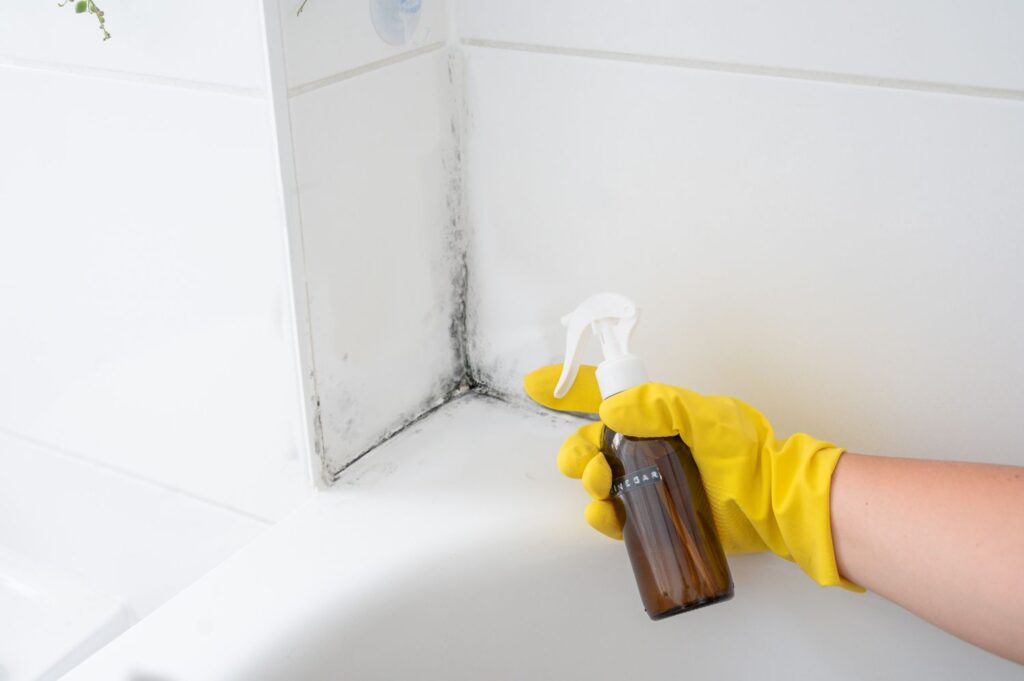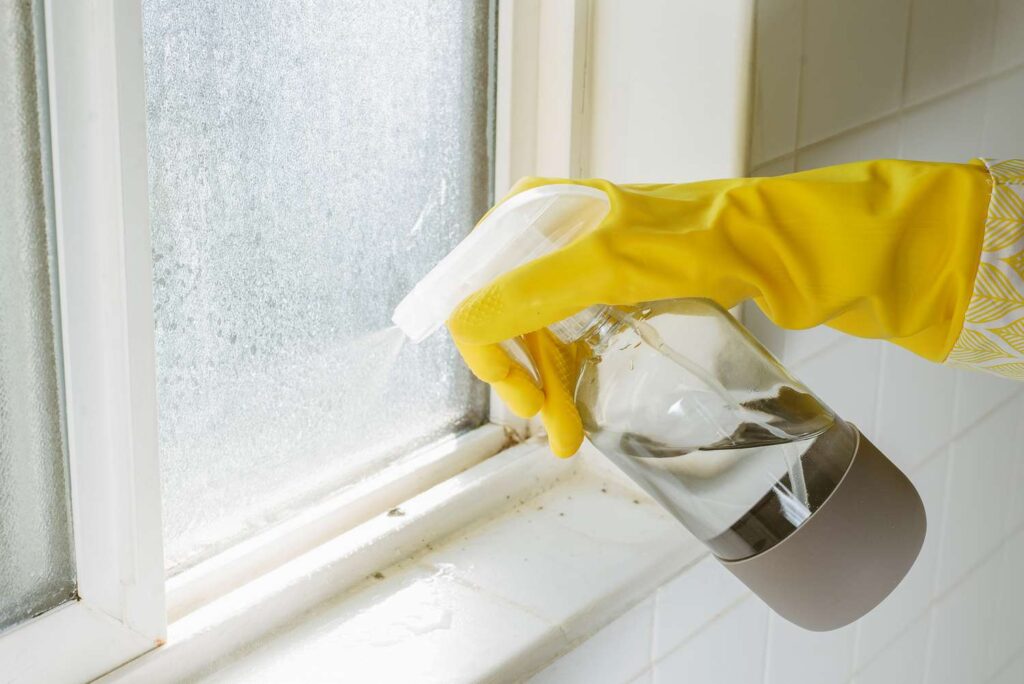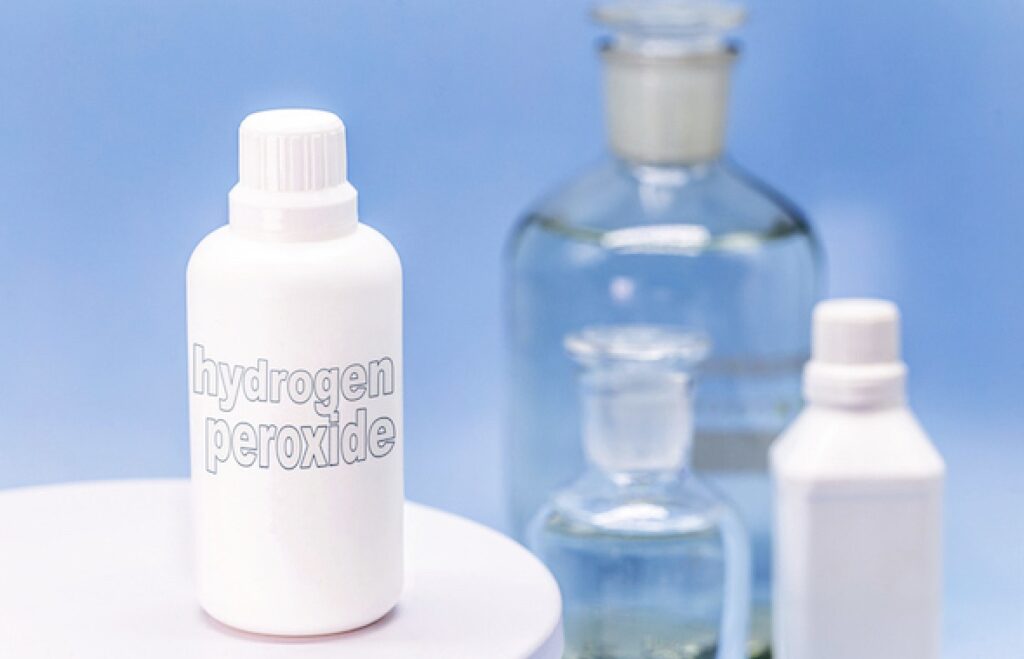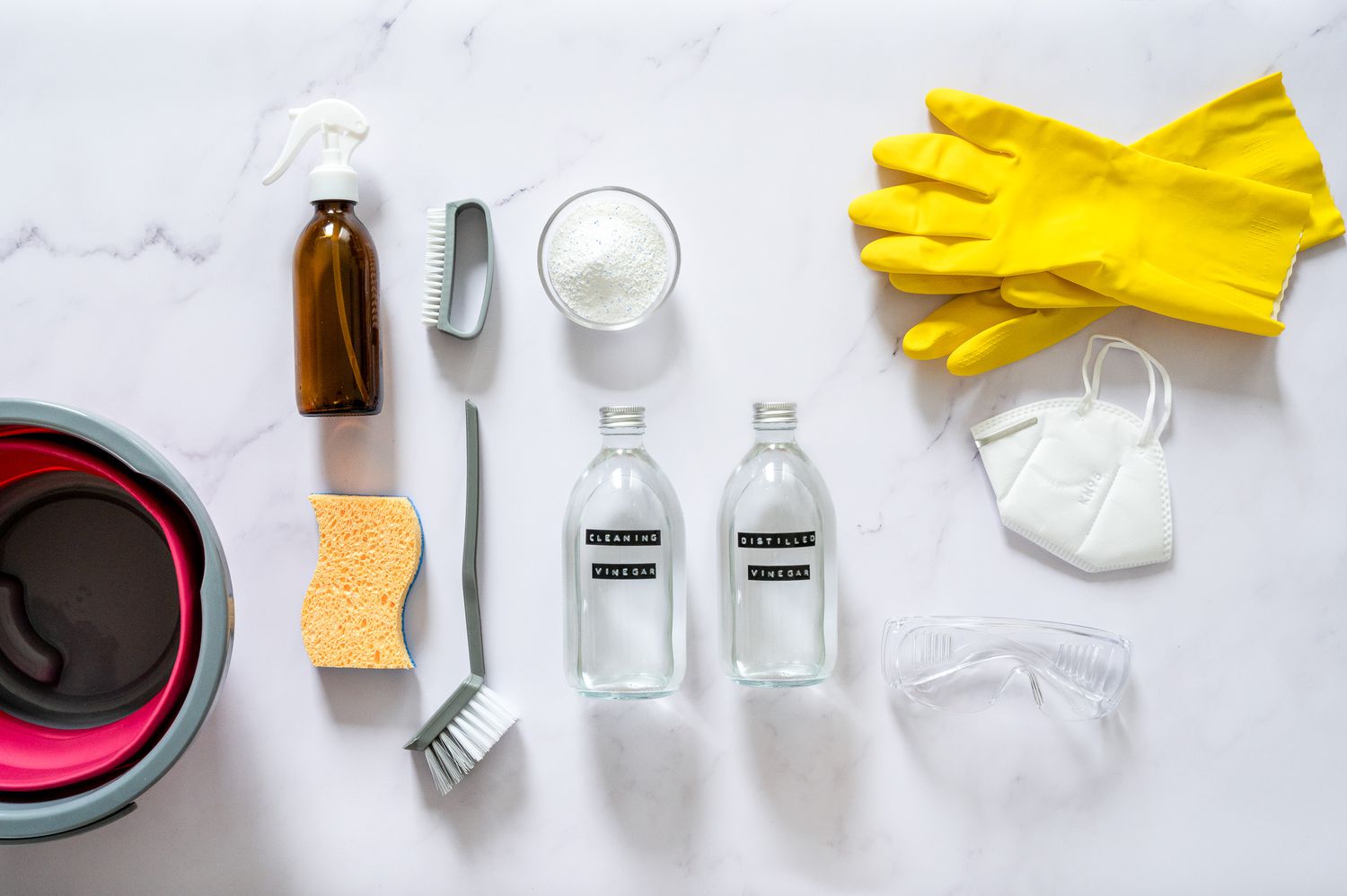Understanding the best methods of removing mold from windows is essential for maintaining a healthy, mold-free home environment. Mold growth on windows is often caused by moisture buildup, poor ventilation, and condensation, which provide ideal conditions for various types of mold. This article will cover the most effective mold removal techniques, from natural solutions to stronger cleaning agents, as well as prevention tips to keep mold from coming back.
1. Using Vinegar to Remove Mold from Windows
One of the most popular natural solutions, using vinegar to remove mold from windows is both effective and non-toxic. Vinegar’s antifungal properties make it ideal for eliminating mold on window sills, frames, and seals.

How to Use Vinegar:
- Pour undiluted white vinegar into a spray bottle.
- Spray the vinegar directly onto the moldy areas and let it sit for at least an hour.
- Use a soft brush or cloth to scrub the mold, then wipe clean with a damp cloth.
Vinegar is particularly effective on window sills and seals, where moisture is likely to accumulate.
2. Baking Soda Solution for Mold Removal on Windows
Baking soda is another effective mold removal method that’s natural and safe. It’s a mild abrasive and a deodorizer, making it perfect for moldy areas around windows.
How to Use Baking Soda:
- Mix one teaspoon of baking soda with two cups of water in a spray bottle.
- Spray the baking soda solution on the mold, then scrub with a soft brush or cloth.
- Wipe the area clean with a damp cloth.
This method works well on windows with visible mold growth, such as window frames and seals.
3. Bleach Solution for Stubborn Mold on Windows
For tougher cases of mold, particularly black mold, a bleach solution can be highly effective. However, bleach should be used with caution, as it produces strong fumes and may damage some surfaces.
How to Use Bleach:
- Mix one part bleach with ten parts water.
- Apply the solution to the moldy area using a cloth or sponge, and let it sit for 5-10 minutes.
- Scrub the mold with a brush, then wipe the area clean with a damp cloth.

Ensure the room is well-ventilated and wear gloves and a mask for safety.
4. Hydrogen Peroxide for Mold Removal
Hydrogen peroxide is an effective mold remover and disinfectant. It’s a great alternative for those looking to avoid strong chemicals like bleach, as it is both antifungal and antibacterial.
How to Use Hydrogen Peroxide:
- Apply a 3% hydrogen peroxide solution directly to the mold.
- Let it sit for 10 minutes, then scrub with a brush.
- Wipe the area clean with a damp cloth.
Hydrogen peroxide is particularly effective on window frames and sills, where mold tends to grow.
5. Preventing Mold from Returning to Windows
Preventing mold regrowth is just as important as removing it. Here are some key tips:
- Reduce Humidity: Use dehumidifiers to lower indoor humidity, especially in rooms prone to mold.
- Improve Ventilation: Regularly open windows or use exhaust fans to increase airflow.
- Regular Cleaning: Clean window sills and frames regularly to prevent dirt buildup, which mold can feed on.
- Seal Windows Properly: Ensure window seals are in good condition to prevent leaks that lead to mold growth.

Comparison Table: Window Materials and Their Mold Resistance
Selecting the right window material can make a significant difference in mold prevention. Below is a comparison of popular window materials and their resistance to mold:
| Window Material | Mold Resistance | Durability | Maintenance | Best Use |
|---|---|---|---|---|
| Vinyl | High | High | Low | Affordable, ideal for humid areas due to its mold resistance |
| Wood | Moderate | Moderate | High | Suitable for traditional homes, requires regular sealing to prevent mold |
| Aluminum | Moderate | High | Low | Durable, good for contemporary designs but can develop condensation |
| Fiberglass | Very High | Very High | Low | Premium choice with excellent mold resistance, suitable for energy-efficient homes |
Material Recommendations:
- Vinyl: Offers strong mold resistance and minimal maintenance, making it ideal for areas prone to humidity.
- Wood: Adds aesthetic appeal but needs regular sealing to prevent mold in high-humidity areas.
- Aluminum: Known for its durability, though moderate insulation means condensation can occur.
- Fiberglass: Provides the highest mold resistance and insulation, ideal for humid or energy-conscious homes.
Conclusion
When it comes to methods of removing mold from windows, options range from natural solutions like vinegar and baking soda to more powerful cleaners like bleach and hydrogen peroxide. Selecting the right approach depends on the severity of the mold. Additionally, choosing mold-resistant materials, maintaining regular cleaning, and reducing indoor humidity can prevent mold regrowth. For extensive mold issues, consider professional mold removal to ensure a safe and thorough cleaning. By combining these cleaning methods with preventive strategies, you can maintain a healthier, mold-free home.


